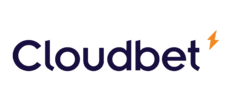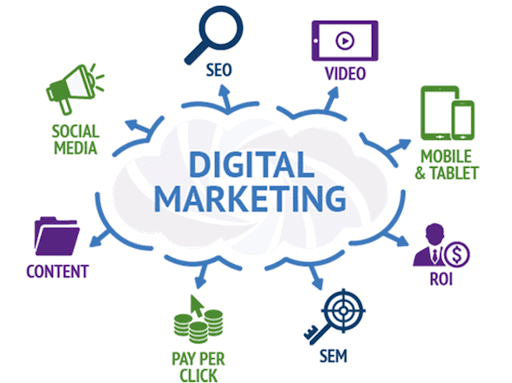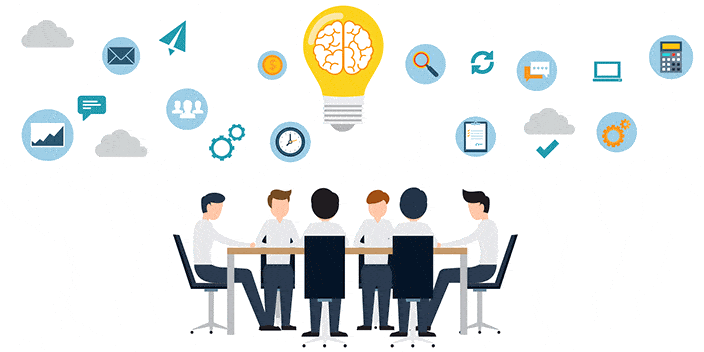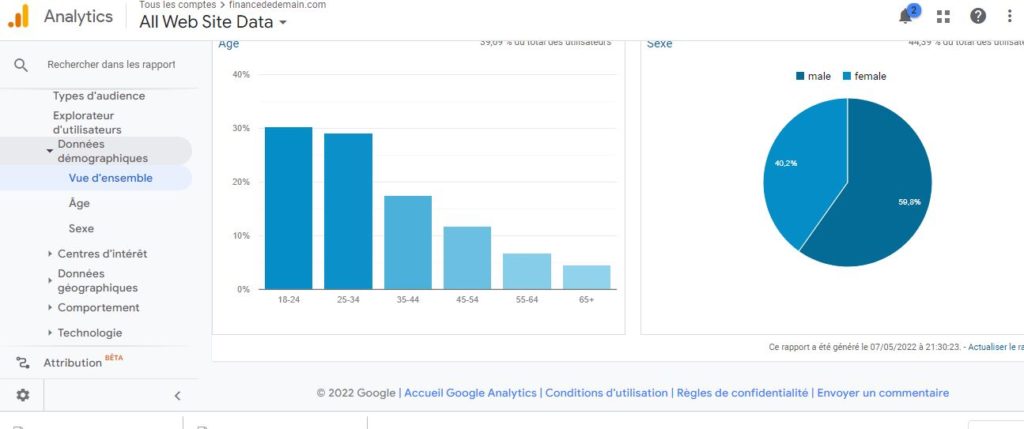The place of digital marketing in business

With the advent of digital, marketing has undergone changes deep in recent years. The appearance of social networks, the rise of data, new automation tools... So many innovations that are reshaping marketing practices within organizations. In this context, what is now the place of digital marketing at the heart of business strategy?
This article offers a clearer view of the ongoing developments and the way in which digital marketing is establishing itself as a strategic function in its own right alongside traditional marketing. In particular, we will see how marketing departments are adopting new tools to interact with their customers and prospects on digital channels.
Digital marketing undoubtedly represents a lever for growth and innovation that no organization can now ignore! In this article, we will show you the place of digital marketing in business. But first, here is software that will allow you to turn your prospects into customers.

Get 200% Bonus after your first deposit. Use this promo code: argent2035
🥀 What is a digital marketing strategy
Digital marketing strategies help marketers set goals. They also help target an audience and develop a digital marketing plan that best reaches that audience. These strategies provide direction for a given campaign or program and a framework for evaluating results.
Today, everything is digital and digital marketing has been integrated into almost every aspect of the business, fundamentally changing the way companies communicate with their customers and deliver value to them.
So, if your business can't implement and execute a digital marketing strategy in an increasingly growing global online market, you simply won't be able to compete.
🥀 Digital marketing channels: a cross-channel strategy
Cross-channel marketing, multi-channel marketing, omnichannel marketing, or whatever term you prefer, is about engaging with your customer or prospect across all digital channels and on all devices.
From inbox and social media to laptops, tablets and smartphones, today's consumers move seamlessly and expect you to be there with them, delivering a transparent and integrated.

To help you build a successful cross-channel marketing strategy, here are the most used digital channels:
✔️ Email advertising
Email marketing is one of the oldest and best-known forms of digital marketing. This technique is used by specialists in B2B and B2C marketing. With email marketing, you collect customer data across various touchpoints in the customer journey.
By categorizing this information, you understand your potential customers' preferences and ultimately gain permission to add them to your mailing list(s).
Email content may include information about your products and services, news about your business. It may also contain personalized offers, customer testimonials, links to case studies and technical or commercial notes.
Value is key to ensuring your emails are opened and read, not deleted immediately. Personalized content and relevant offers go a long way in boosting engagement.
Email marketing is both an art and a science. Your emails and digital assets should be engaging. However, there has to be a balance between sending too many emails and not sending enough.
✔️ Video Marketing
Video is one of the digital marketing channels most powerful available. People love video. They watch videos for fun and research, and they share videos. In fact, YouTube reported over two billion monthly connected viewers. B2B buyers and B2C consumers make purchasing decisions through video.
Video marketing builds brand awareness, increases digital traffic, and increases conversion rates. Videos embedded in blog content have been a cornerstone of B2B and B2C content marketing strategies for years.
Video sharing is the key to getting more eyes on your content. That's why you'll want to take advantage of third-party sites, such as YouTube, and promote videos on your website and social media channels. Encourage others to share your videos.
Keep your videos short and to the point. Attention spans are short, so the key is to deliver great content in an engaging way.
✔️ Social media marketing
Social media is a great way to reach a specific, targeted audience and connect directly with customers, potential customers, and partners. The social media platform(s) you use depends on who you want to target.
Facebook is still the largest social media platform in the world. Twitter is still popular with B2B buyers. Here are the benefits of social media for your business.
Instagram and TikTok are incredibly popular with millennial and Gen Z consumers, and LinkedIn is a great place to connect with B2B buyers in the early stages of the buying cycle.
Each social media platform offers different types of content, but all are very video/image focused. So, when creating content, always keep in mind how you want to distribute it on social media, and then adjust it accordingly.
Different platforms will continue to emerge, so marketers must constantly adapt digital marketing tactics to get the most out of each available platform.
For example, TikTok didn't exist before September 2016, and today it has more active users than LinkedIn, Twitter, Pinterest and Snapchat. Here are the secrets to making money on TikTok in 2021
✔️ SMS (SMS and MMS)
After email marketing, text messaging is the most direct way to reach customers. But like social media, messages must be concise to be effective. Marketing teams can take advantage of short message services (SMS) which are text only or multimedia messages (MMS) which can include videos and gifs.
✔️ Content Marketing
Le Content marketing allows you to personalize your approach to different prospects and customers when presenting your message. The more personalized your content is, the more likely it is to interest, intrigue, and hold the person's attention.
However, your content should align with the intent and interest of your target audience. It needs to provide some value to drive engagement and conversions.
Content types may include email copy, landing pages, infographics, e-books, business records, banner ads, videos, text messages, advertisements, newsletters, press releases, press, articles, blogs and digital postcards.

Get 200% Bonus after your first deposit. Use this official Promo code: argent2035
Content can (and should) be used across all channels, but all of your content should have a consistent voice and message.
✔️ Search Engine Optimization (SEO) and Pay-Per-Click (PPC) Advertising
A good SEO strategy allows you to be at the top of searches on search engines. This strategy allows you to drive traffic to your content. Good SEO results depend on keywords and page optimization.
Using searched keywords and long tail keywords (more than 3 word phrases) in all of your web content will improve SEO and provide the best traffic and conversion results.
Building organic links from high-authority third-party pages is another way to improve page rankings and drive potential customers to your content.
Pay-per-click (PPC) advertising involves paying for each click on a specific link. Search engines and most social media sites offer PPC opportunities. PPC ads will appear in the feeds of your target customers and potential customers.
Search engine marketing is a type of PPC advertising that can have a huge impact. This involves paying a search engine to display marketing messages (copy) and a prominent link when visitors search for specific keywords.
✔️ Website design and marketing
Your website is often the first point of contact that potential customers have with your business and your brand. Excellent web design can promote consistent branding of all digital assets.
This should also make your website more user-friendly for search engines, providing an excellent user experience and improving the conversion rate (more clicks, registrations, etc.).
✔️ Advertisment display
Marketers can display relevant advertisements on third-party sites to reach more prospects. These advertisements may include banners, sidebar areas, video advertisements and interactive advertisements linking to one of your websites or landing pages.
✔️ Affiliate Marketing
Many bloggers and social media influencers are affiliate marketers, as they use their blogs and social media accounts to promote different products and services. It's a type of marketing performance-based.
Affiliate marketers earn a commission for promoting certain products. The more visitors and customers these marketers attract, the more money the affiliate will make.
✔️ Advertising
Traditional advertising media have undergone seismic changes over the past few years. Technology has made it possible to offer more targeted media buys on new television platforms such as Netflix, Hulu, YouTube and others.
But don't rely on network television and radio, because despite a growing number of other entertainment options, people still watch television and listen to the radio.
🥀 How does digital marketing work?
There are several ways to approach a digital marketing campaign. As a digital marketer, you have a wide range of tactics, strategies, and channels in your toolbox that can be used to connect with your audience.
Generally speaking, digital marketing campaigns involve several common steps:
✔️ Define your marketing objectives
Digital marketing is a very broad field. It is therefore important to establish your objectives before launching a digital marketing campaign. For example, do you want to build awareness of your brand? Acquire new customers? Focus on customer retention and loyalty? Setting goals helps you adapt your strategy and budget to maximize your impact.
✔️ Identify your target audience
Who are you trying to get attention from? The more details you have about your target audience (age, location, income, etc.), the easier it will be to figure out how to connect with them.
✔️ Identify the right marketing channels and marketing tactics
Now that you know who you want to reach, you need to decide how (and for how much) you want to reach them. Suppose you are a B2C digital marketer trying to connect with younger customers.
In this case, you could allocate more of your budget to social media advertising on specific platforms rather than spending the majority of your effort (and money) on blogging.
✔️ Develop and optimize content and messaging for each channel
Analyze your data and try to find out as much as possible about your audience. For example, if you know your customers prefer to browse on their phone rather than a laptop, the content they receive should be optimized for mobile viewing. But that may not be enough.
Customers interact with brands across various channels in a non-linear way. So you need to make sure that each piece of content has a consistent brand voice and messaging. Consistency avoids confusion about what your brand is and the value you provide.
✔️ Campaign measurement across key metrics
Measure key metrics and iterate based on those results. If you don't measure your performance based on the key metrics you defined previously, how will you know if the campaign is working well or continually improving?
Measuring results over time ensures you connect with customers, build loyalty, and build brand awareness.
🥀 What type of digital marketing is best?
Digital marketing works for all businesses and industries, but there's no one-size-fits-all approach. Different businesses need to use different digital tactics to achieve their goals. The best tactics depend on several factors, such as size, budget, target audience and business goals of your marketing team.
However, small and medium enterprises can develop organic SEO strategies. They can also leverage social media strategies, email marketing campaigns, and blogging schedules. The reason is that these tactics require little to no investment.
The big enterprises they can use paid programs to achieve their business goals. These tactics could include syndicating digital assets, producing webinars/webcasts, focusing on account-based marketing, and investing in paid media or PPC marketing.
🥀 Digital Marketing vs Digital Media
Digital marketing is a set of activities or tactics. Digital media refers to a set of forms, formats and platforms that include:
- Emails
- SMS and MMS
- In-app/push notifications
- Social networks (Instagram, TikTok, LinkedIn, Facebook, Snapchat, Twitter, Pinterest)
- Audio (Spotify, Pandora, Apple Music)
- Digital advertising (banner ads, pop-up ads)
- Video (YouTube, Netflix, Hulu)
Digital marketers use digital media to connect with customers. In other words, digital marketing is the strategy and digital media are the means.
🥀 Digital Marketing vs Internet Marketing
Digital marketing and internet marketing are slightly different, although there is some overlap between the two. It refers to a set of activities and tactics that use digital media channels.
internet marketing is a subset of digital marketing. It requires internet to connect to leads. All forms of internet marketing are digital marketing, but not all forms of digital marketing are internet marketing.
For example, TV ads, digital billboards, radio ads, and text messages (SMS) fall under digital marketing, but not Internet marketing.
🥀 Digital Marketing vs. Inbound Marketing
Compared to digital marketing, inbound marketing is more of a cohesive strategy made up of certain digital marketing tactics used to try and bring potential customers to the content/digital asset on offer.
Inbound marketing is very metrics-driven, focusing on bringing customers in and then pushing them through the sales funnel, ultimately generating marketing-qualified leads and conversions.
🥀 The role of digital marketing in B2B and B2C
The ultimate goal of digital marketing is to drive a customer or buyer towards a purchase. It allows B2B and B2C marketing teams to engage with a wider audience than possible through more traditional marketing tactics. They can also target more relevant potential customers, increasing marketing ROI.
✔️ Business to Business (B2B) Digital Marketing
The primary goal of B2B digital marketing is to drive high-quality leads to B2B sales teams, ensuring higher conversion rates. B2B purchasing cycles are often long because the products/services are more complex, expensive and require the involvement of more people.
For example, the same product may be sold in different industries or verticals, and each account will have different stakeholders who often engage across multiple channels. The degree of coordination required between business lines is high.
Common channels used by B2B digital marketing teams are business-focused, such as email, webcasts, video, LinkedIn, and Twitter.
✔️ Business-to-consumer (B2C) digital marketing
The principal objective B2C digital marketing is about getting potential customers and customers to discover and interact with your brand by increasing your website traffic and increasing the visibility of your content.
B2C digital marketing teams should choose consumer-focused channels, where B2C buyers are more likely to discover and engage with your brand.
🥀 The future of digital marketing
It all started with mobile, which had a huge impact on digital marketing. Consumer behavior has changed over time. Customers now expect more from their brands, and micro moments matter.
What is a micro moment? It's about a consumer interacting with a brand at the touch of a button and in real time. The challenge for digital marketers now is to intersect people at micro-moments with relevant marketing messages that add to their lives rather than disrupt them.
Customers now expect a unique, connected and seamless experience across all channels and instant gratification. You only have a micro-moment to capture their attention and hold it with a strong message and an enjoyable, engaging experience.
If you don't, they will move on to the next offer. This has made old marketing methods obsolete. Modern marketers must take a mobile-first approach with their global audiences.
🥀 Actions a digital marketer
Adopt a data-driven mindset. Having more data fluidity and making better use of the data you have will allow you to better understand customers and anticipate their needs and not waste even an iota of their time.
Push automation and intelligence to the max. You will need marketing automation to capture massive amounts of data and serve customers in real time.
Ttreat each customer uniquely, differently and appropriately. You need to use the intelligence you get from the micro moments and put them together to get a fuller picture of your customer. This is how you create a more connected experience.
Embrace omnichannel fluidity. You must be ready to interact with customers on any channel in real time and follow them if they move from one channel to another.
🥀 The best digital marketing metrics
These indicators are data expressed numerically and used to measure, compare and evaluate the performance of certain online marketing actions. In other words, they are factual marketing metrics that answer the question of how to measure a digital marketing campaign.
These metrics or indicators will tell us whether or not we are achieving the strategic objectives of our campaigns and are known as KPIs, (Key Performance Indicators). They allow us to quantify precisely and immediately what is happening.
If you want to know more about KPIs, we recommend this guide on KPIs in which you will fully understand how to choose one or another metric to measure your activity.
✔️ Examples of metrics in Digital Marketing
As we said at the beginning of this article, the metrics you choose will depend on your marketing channels through which you find and impact your potential customers.
If your business is in the online world, you most likely have digital assets such as a website, social media, and paid campaigns across various channels. This is why we are going to review the main digital marketing KPIs of these channels that we have mentioned.
To perfectly target the subject, you must differentiate the most popular types of metrics:
Web traffic metrics : They are related to the performance of your website and reflect aspects such as visits, users, page views or bounce rate.
PPC metrics. They link the investment made in a certain type of online advertising with the results obtained. This is the case of CPC or cost per click, CTR and conversion rate.
Social network or social media metrics. They are linked to communication campaigns and content produced on social networks. We speak, among other things, of sharing rate, growth rate, virality coefficient as well as interaction.
Other typologies include SEO metrics, Inbound Marketing metrics, email marketing, Google Ads metrics, e-commerce metrics, etc.
✔️ SMART goals
Before talking in depth about digital marketing indicators, it is necessary to understand the link they have with the objectives. Indicators or KPIs make it possible to measure whether we are going in the right direction, but where?
This is where strategic objectives come in. We will have overall objectives within our company and then departmental objectives. In any case, goals are usually tied to improving metrics and getting the maximum possible result.
However, the formulation of objectives is as important as the objective itself. How are we going to do it? Following the SMART methodology. SMART is the acronym for a series of characteristics that our objectives must meet to be correctly formulated:
- Sspecific or specific
- Mmeasurable or measurable
- Rachievable or achievable
- Rrealistic or realistic
- Timel and timely u
If you want to know more about what SMART goals are and how to formulate them, here I leave you our article on the subject.
🥀 15 Key Digital Marketing Metrics
After having seen these first points on Marketing metrics and objectives, we will analyze one by one different metrics and their importance to measure your Marketing actions.
✔️ Number of visits to your website
This audience measurement refers to the number of times your website has been visited by users. Here we need to differentiate the number of users visiting the page from the number of page views. Indeed, we can have 1 users visiting 000 pages each, which would give us a total of 2 page views.
In the case of sessions, we could say that it is the number of interactions that users have with your website. We could say that it is every time a user sits down to visit your page, being able to see 1 or more pages in a row.
Knowing the number of sessions and the number of total page views, we can calculate the page views per session. You can measure all of this from Google Analytics
These are the main metrics of web traffic and what is interesting is that you measure their evolution over time and compare it with other previous periods. In addition, it will allow you to measure the impact of the different marketing actions you carry out on web traffic.
✔️ Number and percentage of visitors
A great way to gauge whether users like your content or platform is to calculate the % of returning users. In other words, we need to distinguish between new visitors and returning visitors. We may also measure this from Google Analytics and analyze/compare different time periods
In marketing, you need to have one thing clear, improving user retention is easier than trying to attract new users to your page or service.
✔️ Time spent on a website
How much time do Internet users spend, on average, on your site and its sections? This is a great indicator of how you are meeting their expectations and giving them exactly what they are looking for.
It allows us to optimize content to satisfy the audience, analyze which content is most remembered and maximize the performance of our strategies.
✔️ Rebound rate
An indicator closely related to the previous metric calculates the percentage of users who enter your page and leave your website via the same page by which they arrived without interacting with it. In other words, what % of users abandon it directly. You can also measure it from your dashboard Google Analytics.
It is important that you consider what industry you are in to make an adequate calculation. You need to compare yourself to data from competitors in your same industry to have realistic benchmarks. For example, in the case of blogs, the bounce rate is much higher (80-90%) only in a service page (10-30%).
✔️ Audience by area of influence
It calculates the percentage of visits coming from different countries or cities, which helps us define the geolocation of our potential customers.
Knowing which countries the visits to your website come from is an important strategic element because it will allow you to further personalize the content according to the timing and schedules of your target audience.
✔️ Audience by age and gender
In this case, it allows you to identify what percentage of men and women visit your site and what age breakdown occurs. It is very useful to target online marketing plan.
As in the previous case, knowing demographic data such as the age and gender of your audience will allow you to better build your buyer person. Knowing this data will help you understand the issues, desires and motivations behind your users and better personalize your content or commercial messages.
✔️ Interests and affinities of visitors
Do you know what your audience is looking for and what they like? Do you know how to better personalize your products and services for your users? If we manage to link our products to the interests that our audience likes, we will get more personalized products and therefore better conversions.
To do this, in your Google Analytics panel you will be able to know the interests and affinity categories of your audience. This not only allows you to improve your product, but also refine your distribution channels.
If your audience loves movies, why not advertise on streaming platforms or raffle tickets? The possibilities here are limitless!
✔️ Visits by devices
We are also interested to know from which devices they access the content: smartphones, computers, tablets... Even if the design must always be responsive, if there are big differences it will be necessary to optimize, above all, those which generate the most audience flow.
A lot of web traffic today comes from mobile devices, so whatever your strategy, you need to focus on a mobile-first experience to make mobile browsing enjoyable.
✔️ Conversion of visits
If we seek to increase the traffic of our website, it is to increase the results (downloads, registrations, sales, activation of subscriptions, video views, etc.).
For this we will have to configure our objectives within our measurement platform to have a follow-up of the objectives so that we never lose focus. You will be able to set up goals to measure revenue, acquisition, viewing, and user interaction.
✔️ Conversion funnel stages
Generally, a large part of the purchases is not made directly. In other words, your brand will have to hit a user repeatedly to buy from you. It is therefore necessary to know how to identify the journey or the map of the customer journey of your customer and the funnel or the funnel that you have designed to qualify them for the sale.
What if you have a lot of leads but can't convert them into sales? Do I need more leads? Should I improve my sales page? Do I need to create an intermediate qualification step like a webinar or a downloadable ebook?
These are the type of questions that will help you solve your funnel or funnel. Once you identify this funnel, it will be much easier to identify bottlenecks and improve conversion.
✔️ Comments, opinions and recommendations
The human being is a social animal and you have to know how to identify the opportunities that this condition offers you. We feel much safer buying products or services that have been recommended to us by friends or acquaintances and you can use them for your website. This is called social proof or social proof.
The metric here would be the % of testimonials or positive opinions about your product or service. You can also use a satisfaction indicator such as NPS.
The more important this data, the more interest and notoriety we will generate. It is an excellent indicator to guide the content.
✔️ Origin of visits
From which channels do users access our communications: social networks, SEO, SEM, direct access, other websites…?
You can identify them from your Google Analytics panel to highlight the channels that bring you the most traffic and try to improve strategies if your performance is poor.
✔️ Campaign performance
They evaluate the success or failure of the communication actions carried out, for example in Google Adwords
In order to better analyze the performance of your campaigns, we recommend this article on optimizing Google Ads campaigns.
✔️ Return on investment
It quantifies to what extent the money spent on campaigns produces positive results with an economic return, allowing us to compare which campaigns are the most profitable or effective and which ones we should eliminate.
✔️ Conversions by channel
Calculate and compare how many users have reached our goals in each channel used, whether it's social media, SEO, Adwords, blog or any other.
🥀Tips for successful digital marketing campaigns
Set specific goals for yourself. Whether it's generating unique visitors, sales or qualified leads, define clear KPIs upstream to be able to measure the performance of your campaigns. This step is crucial to optimize your strategy.
Clearly identify your persona, your ideal customer. By precisely understanding their expectations, you will create truly tailored content and messages that will engage your target.
Favor a cross-channel approach. By combining, for example, social networks, display, e-mailing and natural referencing, you will reach your audience at the different stages of their customer journey. This strategy amplifies results.
Measure and analyze your data continuously using powerful tracking tools. They will allow you to identify the most effective levers to adjust your action plan and optimize your returns on investment.
Focus on impactful visuals and quality content to boost your engagement rate. Neat copywriting, videos, photos… be creative to generate interest.
Test each campaign before a mass deployment to compare results and apply best practices identified through this learning phase. Automate as many actions as possible to focus your teams on high value-added tasks and gain efficiency on each campaign.
🥀 In short
At the end of our analysis, it is clear that digital marketing is now establishing itself as a strategic function in its own right within companies. Its mastery has even become essential for any type of organization wishing to develop its online presence and optimize its customer relations.
Whether it is adopting the right technological tools, analyzing data in detail or producing the most engaging content, the skills required are multiple. But it is at this price that marketing departments will succeed in successfully completing their digital migration.
Much more than a simple support, digital marketing must be able to permeate all services and irrigate the company culture. Its vocation is to place the end customer at the center of initiatives to guarantee them the best experience throughout their journey.
Without a doubt, the coming years will confirm this fundamental trend towards marketing strategies “digital-first“, as the prospects offered seem promising in terms of innovation and business performance.
thank you for your trust

























Leave comments